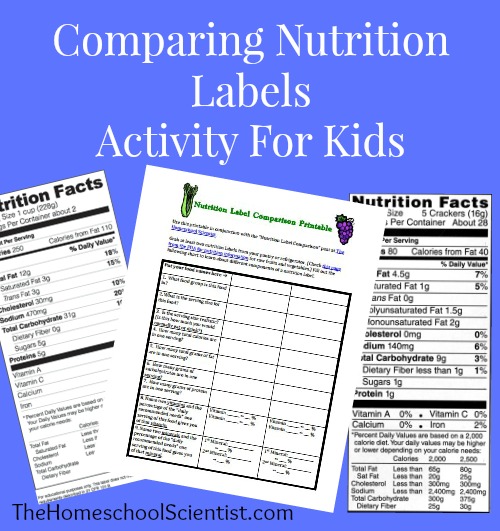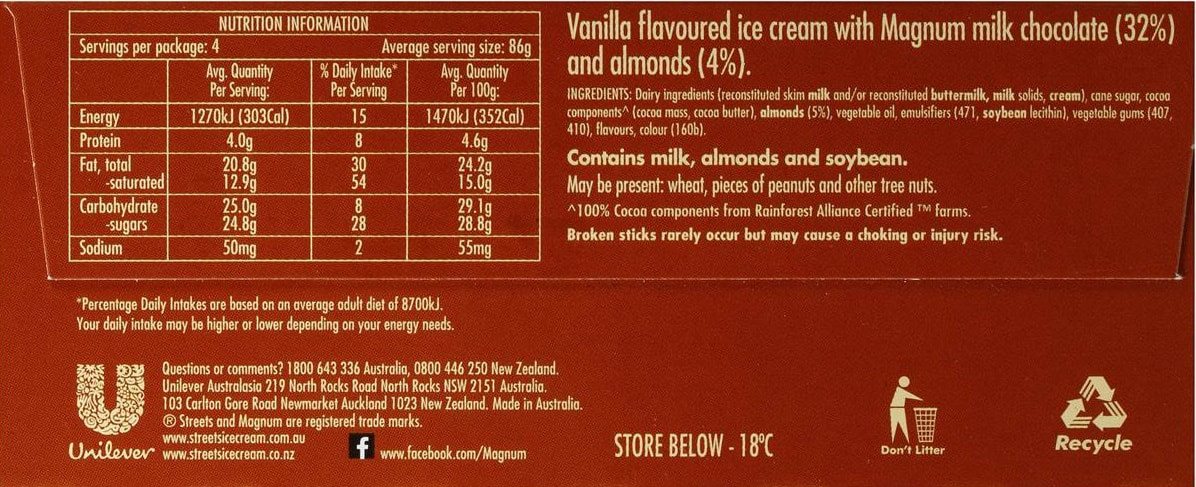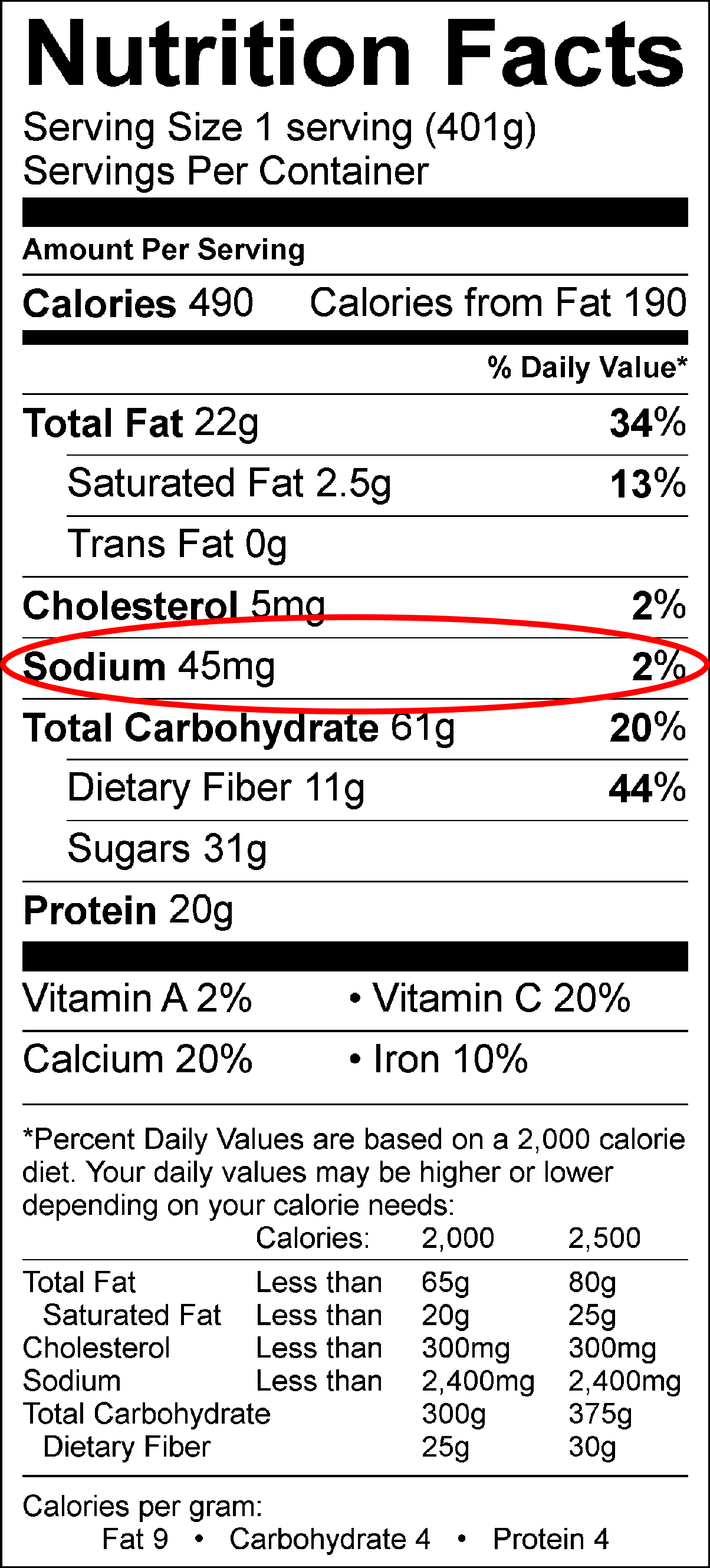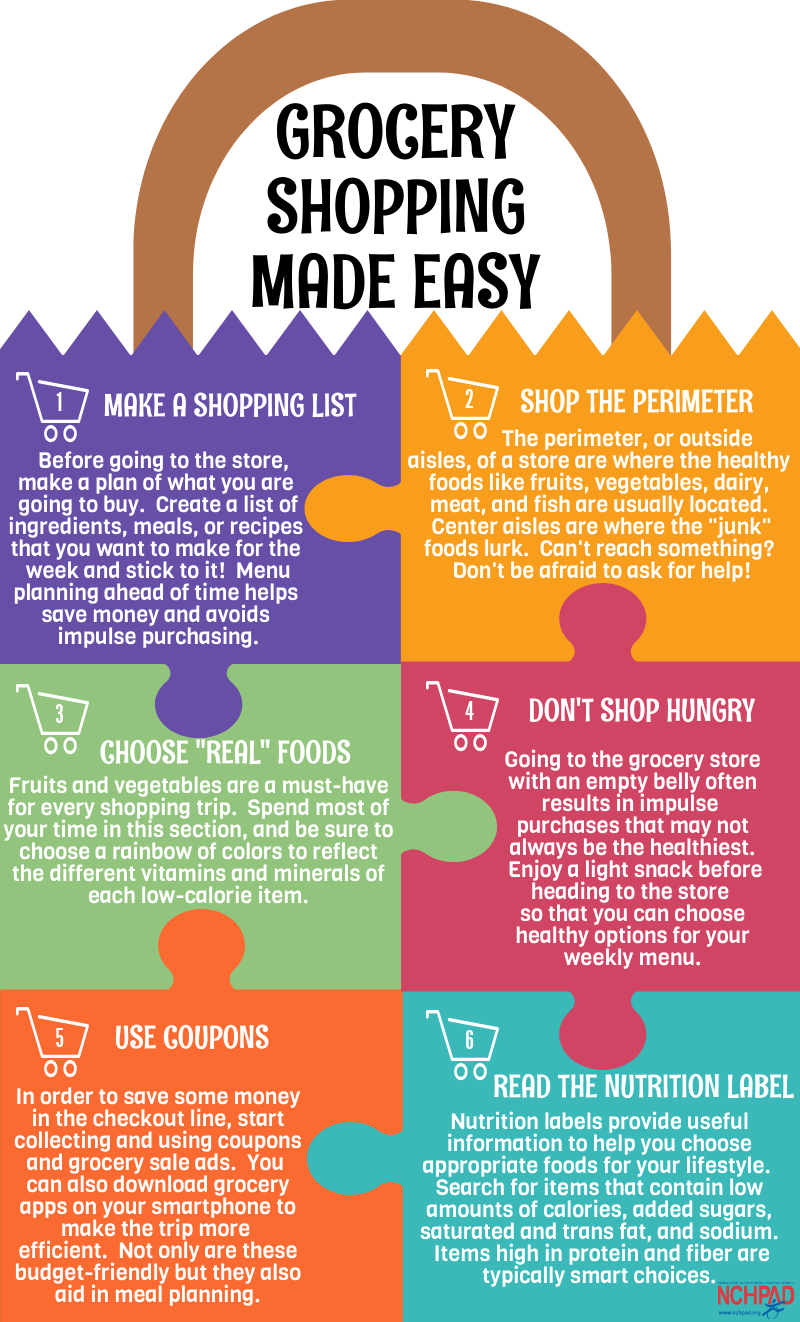40 how do i read nutrition labels
How to Read Carbohydrates on Food Labels - GlycoLeap When learning how to read carbohydrates on food labels, always remember that 1 serving of carbohydrate is equal to 15 g of carbohydrates. If you want to have a snack, it is recommended to eat no more than 1 to 2 servings of carbohydrates in one sitting. That would be around 15 to 30 g of carbohydrates. Snack = 15 - 30 g of carbohydrate When it comes to reading food labels, what's most important? Serving size. Check to see how many servings the package contains. The nutrition numbers on the rest of the label are for a single serving. So if you eat two ...
How to Understand and Use the Nutrition Facts Label | FDA When looking at the Nutrition Facts label, first take a look at the number of servings in the package (servings per container) and the serving size. Serving sizes are standardized to make it easier...

How do i read nutrition labels
Food labels - NHS Nutrition labels are often displayed as a panel or grid on the back or side of packaging. This type of label includes information on energy (kJ/kcal), fat, saturates (saturated fat), carbohydrate, sugars, protein and salt. It may also provide additional information on certain nutrients, such as fibre. How To Read Nutrition Labels (Like a Pro) - Ditch The Carbs How to read nutrition labels for low carb + keto Always remember that the number of servings you consume determines the number of carbs actually consumed. To count your carbs, simply multiply the carbs listed for 1 serving by the number of servings you actually consumed. Know the 50 names of sugar HealthWorks! Healthy Living Series: Reading Food Labels - YouTube When reading a food label, start by looking at the serving size, located here on the nutrition facts panel. All nutritional information on the ...
How do i read nutrition labels. Understanding Food Nutrition Labels | American Heart Association 1 - Start with the serving information at the top. This will tell you the size of a single serving and the total number of servings per container (package). 2 - Next, check total calories per serving and container. Pay attention to the calories per serving and how many calories you're really consuming if you eat the whole package. The Basics of the Nutrition Facts Label The Basics of the Nutrition Facts Label · Step 1: Start with the Serving Size · Step 2: Compare the Total Calories to Your Individual Needs · Step ... How to Read Food Labels Without Being Tricked - Healthline It simply indicates that at one point the manufacturer worked with a natural source like apples or rice. Organic. This label says very little about whether a product is healthy. For example,... PDF How Do I Understand the "Nutrition Facts" Label? Nutrition Facts label and ingredient list. When you go grocery shopping, take time to read the Nutrition Facts labels on the foods you purchase. Compare the nutrients and calories in one food to those in another. The information may surprise you. Make sure you aren't buying foods high in calories, saturated fat, trans fat, sodium and added ...
How to read food labels | healthdirect What information is on the food label? · the name of the product, describing accurately what it is · the brand name · what ingredients it contains (listed in order ... This Is How to Read a Nutrition Facts Label on the Keto Diet Some labels show both, but it's simpler to assess using the percentage figure. You may also hear about RDI (Reference Daily Intake) and DRV (Daily Reference Values), which essentially mean the same thing as Percent Daily Value [ * ]. Ingredients List The ingredient list is usually found below or next to the nutrient breakdown. How to Read Nutrition Facts Labels the Right Way - GoodRx Nutrition Facts labels are required to list the total fat, saturated fat, and trans fats on packaged food products. It's important to choose foods with the right kinds of fats. Here are the differences between the fats you'll see on the label. Bad fats Saturated and trans fats are the less healthy types of fats. Reading Nutrition Labels - Cronometer This label type can be found on most American branded products. Key features include: Energy measured in Calories only, Convenient serving size measurement (e.g. cups, oz, fl. oz, Tbsp) Vitamin D, Iron, Calcium, Potassium %DV (based on 2000 kcal diet) Some of the Daily Values have changed.
How To Read Food and Beverage Labels | National Institute on Aging At the top of the Nutrition Facts label, you will find the total number of servings in the container and the food or beverage's serving size. The serving size on the label is based on the amount of food that people may typically eat at one time and is not a recommendation of how much to eat. Read more about serving and portion sizes. Sodium on the Nutrition Facts Label | FDA The Nutrition Facts label is a handy tool you can use every day to see the amount of sodium in packaged foods and beverages and make informed dietary choices. FDA's Education Materials. Reading food labels: Tips if you have diabetes - Mayo Clinic The serving sizes listed on food labels may be different from the serving sizes in your meal plan. If you eat twice the serving size listed on the label, you also double the calories, fat, carbohydrates, protein, sodium and other ingredients. Consider your daily calorie goals. The same goes for the Daily Value listed on food labels. Learning To Read Labels :: Diabetes Education Online The "Nutrition Facts Label" is found on the outside of the container. To count carbohydrates, look at three things: Serving Size Number of Servings Per Container Grams of Total Carbohydrate per serving The total carbohydrate tells how many grams of carbohydrate are in one serving. Be careful when reading the label.
How to read nutrition labels? A brief introduction to reading the Nutrition Facts label is provided below. Step 1: Begin by determining the serving size. Step 2: Determine the total number of calories consumed. Step 3: Use the Percent Daily Values as a Reference Point. Step 4: Review the Nutrition Glossary.
How to read food labels | Health Advice Hub - Laya Healthcare High is more than 1.5g salt per 100g and will be colour-coded red. · Moderate is 0.3g-1.5g per 100g and will be colour-coded amber. · Low is 0.3g salt or less per ...
Food Labels: Fat & Cholesterol | Home & Garden Information Center % Daily Values (% DVs) are listed in a column on the "Nutrition Facts" label. By looking at these percentages, you easily can determine whether a food contributes a lot or a little of a particular nutrient to your daily diet. Use % DV as your guide for identifying which foods are high or low in a nutrient.
How to Read Nutrition Labels in 2019 - Healthline Nutrition labels, coming 2021 The coming changes to the label intend to make interpretation a little easier. Updates like a larger, bolded font for calories and more realistic serving sizes (no...
How to understand food labels - Eat For Health The Nutrition Information Panel on a food label offers the simplest and easiest way to choose foods with less saturated fat, salt (sodium), added sugars and kilojoules, and more fibre. It can also be used to decide how large one serve of a food group choice or discretionary food would be and whether it's worth the kilojoules.
3 Ways to Read Nutrition Facts on Food Labels - wikiHow To interpret what the daily values and percentages actually refer to, start by checking the serving size listed at the top of the label. This number will help you figure out how much sugar, fat, and other nutrients are actually inside the container that you're holding.
How to Read the Nutrition Facts Label on Packaged Foods Sodium. Many people get far too much salt, or sodium. Most of it is in packaged foods and restaurant items. Limit salt to 2,300 milligrams (about 1 teaspoon) daily. If you have high blood pressure ...
HealthWorks! Healthy Living Series: Reading Food Labels - YouTube When reading a food label, start by looking at the serving size, located here on the nutrition facts panel. All nutritional information on the ...
How To Read Nutrition Labels (Like a Pro) - Ditch The Carbs How to read nutrition labels for low carb + keto Always remember that the number of servings you consume determines the number of carbs actually consumed. To count your carbs, simply multiply the carbs listed for 1 serving by the number of servings you actually consumed. Know the 50 names of sugar
Food labels - NHS Nutrition labels are often displayed as a panel or grid on the back or side of packaging. This type of label includes information on energy (kJ/kcal), fat, saturates (saturated fat), carbohydrate, sugars, protein and salt. It may also provide additional information on certain nutrients, such as fibre.











Post a Comment for "40 how do i read nutrition labels"